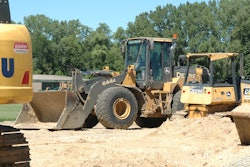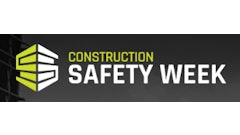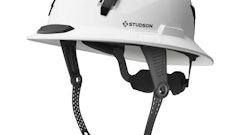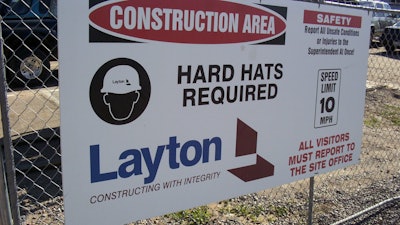
You’ve been through the process hundreds of times. The client says “go” and your team takes off, beginning the construction phase. Along the way, your team may face several hurdles like poor weather, material interruptions, and worker shortages that could delay your timeline.
While these hurdles are challenging, few might be as costly as a criminal trespasser.
Whether a criminal is motivated by money, data, or project resistance, the outcome to your team is likely the same: extended downtime and costs that could reach thousands and possibly millions of dollars.
When I visit construction sites for Sentry Insurance, I remind teams that one of the best ways to prevent security loss starts with making criminal actions challenging to perform. The strategies you’ll find below are intended to help you do just that.
Project Security Risks
Before you can fully plan for, and protect, your worksite from trespassers, your team needs to understand the security risks it faces. Understanding the risks will help you develop methods to strengthen security and reduce losses. Consider planning for each of the following:
- Theft of equipment, tools, and materials
- Vandalism
- Arson
- Trespassers
- Violence
- Cyber-threats
1. Assess Before You Construct
Once your team understands each security risk, it’s time to consider how they might differ based on the specific project your team is working on.
Start with a pre-construction security assessment. Your assessment should account for location-specific exposures, project type, socioeconomic factors, and the level of public support or resistance surrounding your project. Together, these factors can give your team a better picture of unique, or increased risks to your job site.
2. Minimize entry points
After your assessment is complete, set up perimeter security. This will require several strategies to minimize entry points while protecting the few entrances that exist.
- Perimeter fencing: Set up fencing and barriers to create controlled and monitored entry points for permitted contractors, suppliers, and vehicle entry.
- Warning signage: Post signs throughout the worksite that warn of trespassing and the surveillance in use.
- Camera systems: Prepare your worksite with the assumption a crime will eventually take place by installing cameras in areas that are difficult to access. Consider cameras with night vision capabilities to ensure your worksite has surveillance every hour.
- Lighting: An illuminated worksite, in tandem with camera systems, is intended to make criminals feel uncomfortable. If they successfully commit a crime, the odds of being identified through video and lighting are much higher. Consider both permanent and motion lighting.
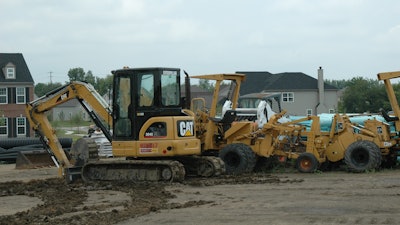 When it comes to preventing equipment theft, you should aim to lengthen the time it takes to commit a crime, increasing the odds of deterring trespassers.ACBM Staff
When it comes to preventing equipment theft, you should aim to lengthen the time it takes to commit a crime, increasing the odds of deterring trespassers.ACBM Staff
3. Deter equipment theft
Even with minimized entry points and noticeable deterrents, some trespassers may attempt to steal your vehicles and equipment anyway. The steps you take next should aim to lengthen the time it takes to commit a crime, increasing the odds of deterring trespassers.
- Lock up tools, equipment, and materials when possible
- Disable and remove batteries from equipment. Consider hidden ignition switches.
- Equip vehicles with hidden GPS tracking devices and geofencing alerts
- Limit the amount of time high-value materials are located at the worksite. If you need materials on a specific day, ask for the supplier to drop them off the day prior.
- Store valuable supplies at higher levels as the building progresses. Incorporate toeboards, netting, or guardrails to prevent materials from falling.
4. Post-breach protections
When a breach occurs, response times are crucial. Incorporate alarm systems and motion sensors that alert those in the surrounding area of a breach through lights and sound. Other options include a silent alarm system that alerts local authorities and the construction supervisor when a breach occurs.
If your team hires onsite guards, discuss guidelines regarding where they should park, how many times they should walk the property, and which areas to patrol.
No matter what option you rely on, maintain contact with local police to discuss how often they monitor the area surrounding your project.
5. Limit after-hour threats
Your materials and equipment are a major financial asset, but don’t forget about your employees’ safety. As your team walks outside the jobsite, they may be targets to potential robbers, especially if they’re carrying tools or other supplies. Encourage workers to leave in groups to provide more security when their shift ends.
6. Strengthen online security
The tips mentioned above should help you mitigate physical security risks, but don’t forget to include cyber threats in your plan. Construction operations are becoming prone to ransomware, phishing, and fraudulent impersonation as more information moves online.
- Separate the network your cameras use from other technology to limit surveillance breaches by cyber criminals.
- Identify and encrypt sensitive data.
- Implement firewalls to limit access to malicious IP addresses.
- Establish a data backup and recovery plan.
- Require multi-factor authentication on all worksite devices.
- Store physical backup copies of sensitive data in a secure location with limited access.
- Train employees to identify cyber threats. Test them randomly throughout the year to maintain awareness.
This article is intended to help you identify potential security gaps on your jobsite, but the steps you take after reading this will be the most important. Talk with your team and local officials to find solutions to your security gaps. And most importantly, make sure your team has the right property and crime coverages in place to help you recover if the unexpected happens.
Mike Huckabaa is a senior safety consultant for Sentry Insurance.







